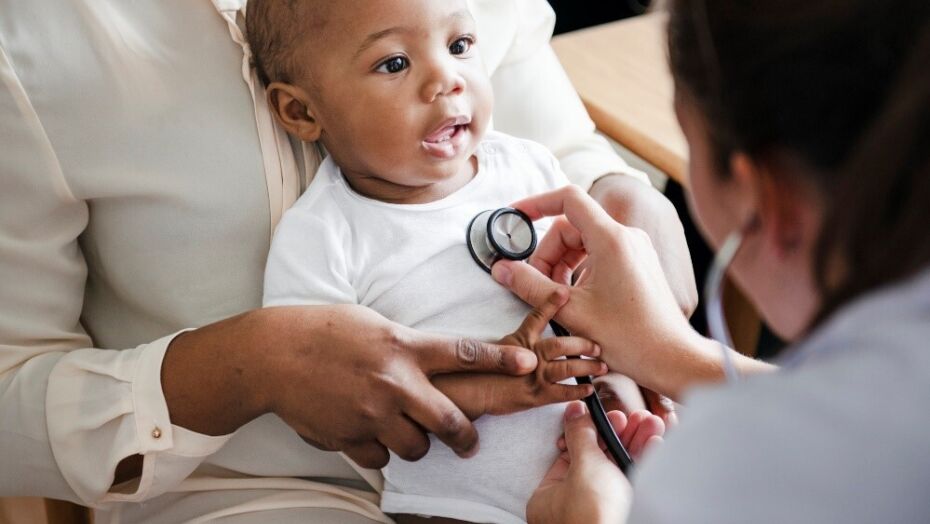
5 Top Tips for Handling Pediatric Care After-Hours
When your child feels unwell, it’s natural for parents to do anything possible to get them feeling well again. But what happens after hours when the pediatrician's office is closed, and the situation doesn't feel serious enough for the hospital's emergency room?
Navigating pediatric care after hours can be challenging, especially for new parents, but understanding your options beforehand can save you both time and stress. Whether it’s a rising fever in the middle of the night or a surprise injury over the weekend, knowing your options can give you peace of mind.
Can you take a child to a regular urgent care?
Parents often turn to urgent care facilities when their child's pediatrician is unavailable. While these facilities are excellent for treating older kids and teenagers, most urgent care centers have age restrictions and do not offer services for infants under 2, which might surprise most parents.
It is also important to note that some urgent care centers do not have X-ray machines, so if you need orthopedic help (bones, joints, ligaments, tendons and muscles) you may want to call ahead to check if yours do.
Why do some urgent care centers not treat children under 2 years old?
A baby’s immune system is less developed than an older child's, so conditions escalate quickly. Often, infants require specialized medical expertise and advanced diagnostic tools that most urgent care centers do not carry.
For this reason, it's important to know the age restrictions at the urgent care centers near you. If none of the urgent care centers in your area accept infants under 2, you need to locate your nearest pediatric emergency room.
Why choose a pediatric emergency room?
Most hospitals have designated pediatric emergency rooms with a team trained to address the needs of infants and children. These units are equipped with child-specific medical technology and age-appropriate interventions, from infancy to adulthood.
What is the difference between urgent care and pediatric emergency room?
Urgent care centers and pediatric emergency rooms serve different purposes. While urgent care centers are more suitable for mild to moderate issues, like minor illnesses, pediatric emergency rooms are equipped for more severe situations.
Is it better to go to the pediatrician or urgent care?
You should go to your pediatrician for routine care, non-urgent illnesses and continuity of care. If your pediatrician’s office is closed and the issue is mild to moderate, such as minor cuts that need stitches, sprains, fevers or an ear infection, or you can’t get an appointment, you can go to an urgent care.
Step-by-step guide for handling after-hours pediatric care
When you are faced with a child's medical needs during your pediatrics off-hours, here's a go-to plan on how to handle it:
1. Assess the urgency of the situation
First, take a moment to assess the severity of your child's condition. Does it seem life-threatening or involve symptoms like difficulty breathing, persistent vomiting or unconsciousness? If so, dial 911 or head directly to the nearest emergency room. Otherwise, proceed with the following steps.
2. Contact a 24-hour nurse line or your pediatrician's after-hours number
Many pediatric practices provide 24-hour nurse hotlines or after-hours contact options. These professionals can offer guidance on whether your child needs emergency care, can wait for an appointment or can be treated with solutions available at home.
3. Understand your local resources
Locate a pediatric emergency room near you and record its contact information, hours of operation and location. Familiarize yourself with its services so you won't waste time in an emergency.
4. Keep basic first-aid knowledge handy
Always keep a well-stocked first aid kit in your home and vehicle. Knowing how to provide initial care, such as stopping bleeding, reducing a fever or calming a child in distress, can help your child and you in a stressful situation.
5. Trust your instincts
Finally, trust your instincts. If something doesn't feel right, seek professional help. It's better to err on the side of caution than delay your child's care.
When should I go to a pediatric emergency room?
Visit a pediatric emergency room if your child shows any of the following signs
- Respiratory issues like difficulty breathing, wheezing, asthma attacks or severe allergic reactions.
- High fevers, especially for kids that don't respond to over-the-counter medication or that occur in infants younger than 3 months.
- Trauma or injuries such as fractures, head injuries or burns.
- Severe dehydration from prolonged vomiting or diarrhea.
- Unusual symptoms, such as rashes, lethargy or inconsolable crying.
What does an after-hours pediatric care toolkit need?
Preparation is your greatest ally in managing pediatric care outside of regular hours. Here's a quick checklist to make sure you're ready for any situation:
- Contact information for your pediatrician, available nurse hotlines and local pediatric ERs.
- Locations and directions to the nearest pediatric ER and urgent care centers.
- Emergency kit including fever reducers, a thermometer, bandages and antiseptic wipes.
- Notes on medical history, including allergies, medications and past medical conditions.
Creating your after-hours toolkit will make you feel more confident when navigating pediatric care.
How can I avoid delays during an after-hours pediatric visit?
Streamline your visit to any pediatric appointment by:
- Bringing your child’s insurance card and ID
- Preparing a list of any medications your child is taking
- Packing comfort items such as a favorite toy or blanket to help ease your child’s anxiety
What should I do if I’m unsure where to go for pediatric care?
If you’re unsure whether your child needs urgent care or emergency room attention, don’t hesitate to call your pediatrician’s after-hours line or a medical professional for guidance. They can help determine the best course of action for your child’s situation.
Know where to go during an emergency
The health and well-being of your child are your top priority, and it's ours, too. Understanding the limitations of urgent care centers and the advantages of pediatric emergency rooms can make all the difference when time and clarity matter the most. With some preparation and knowledge, you can ensure your child gets the care they need, even when the pediatrician's office is closed.
Learn more about the Pediatric Emergency Room at Ochsner Children’s.


